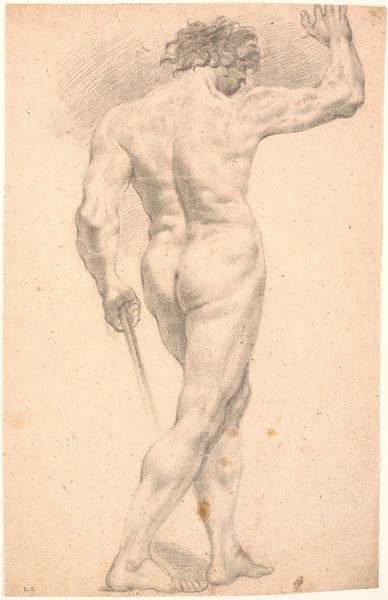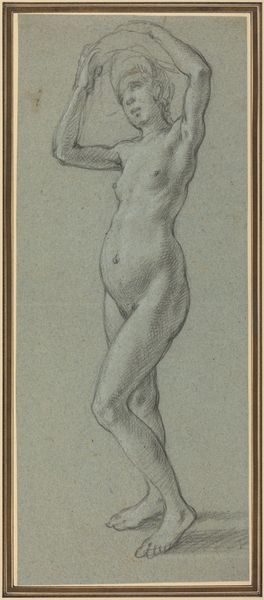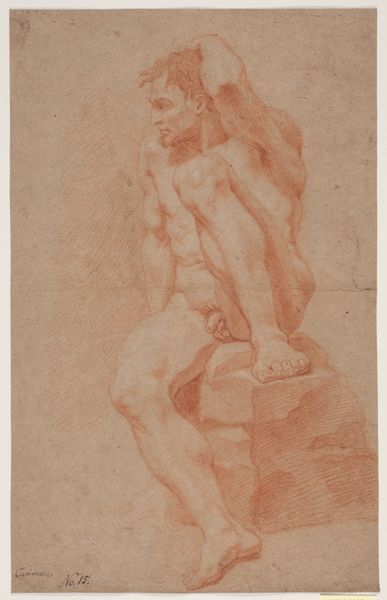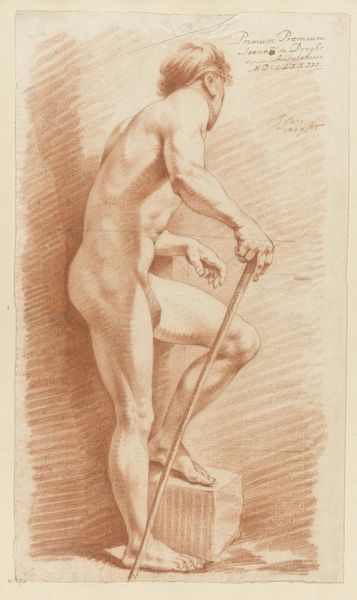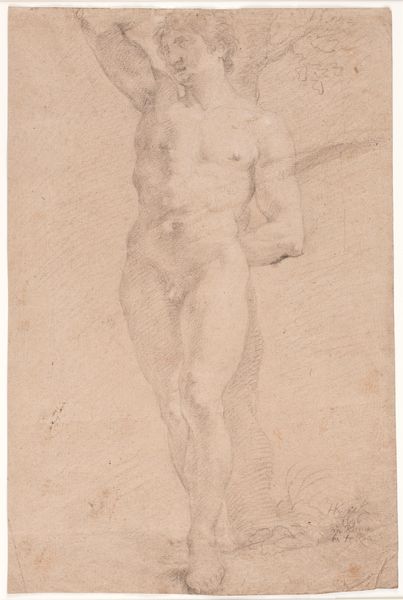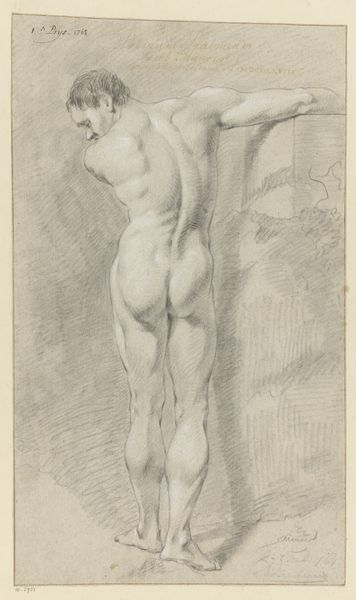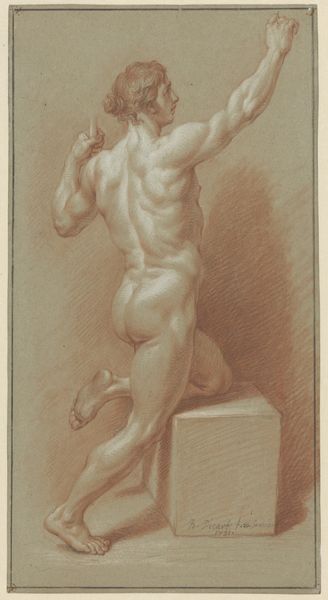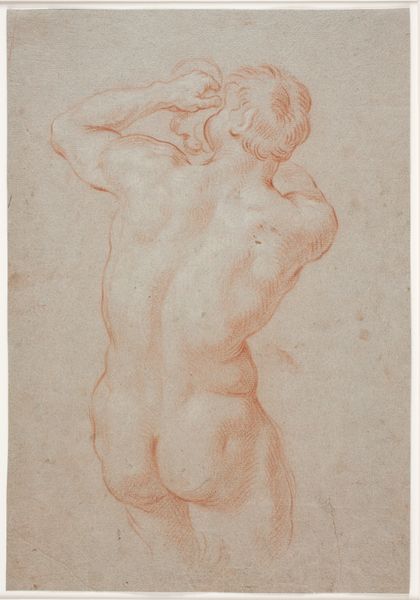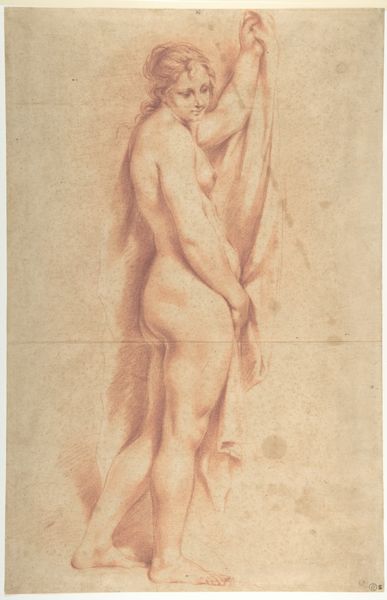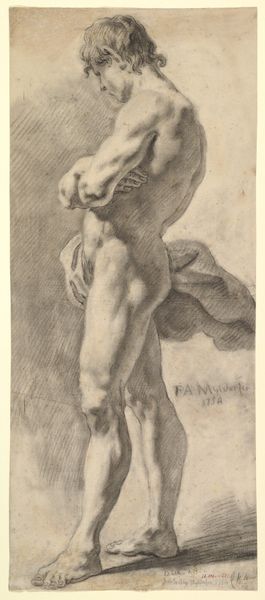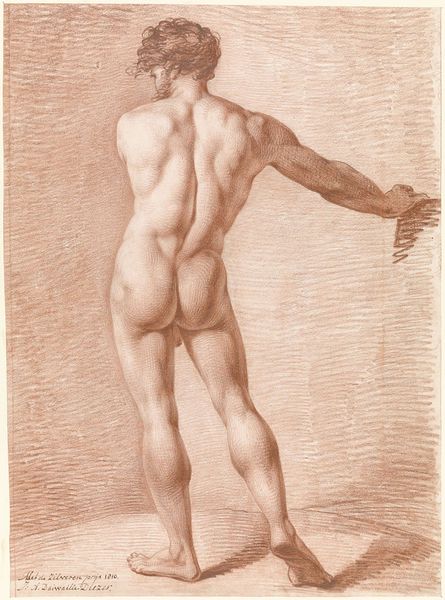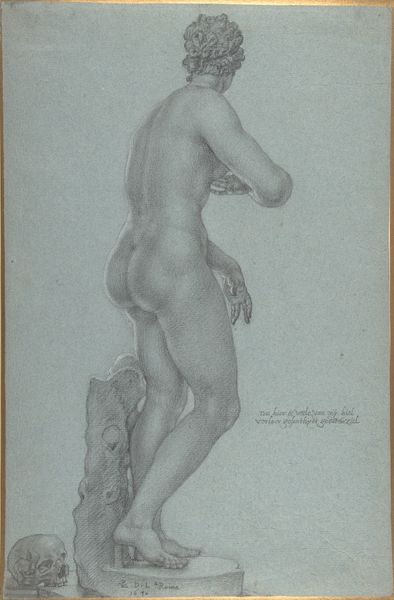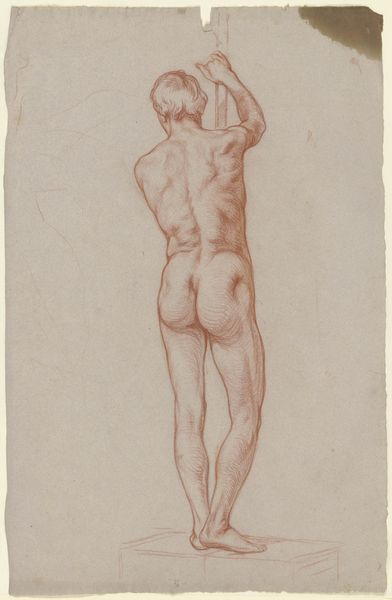
drawing, dry-media
#
drawing
#
charcoal drawing
#
mannerism
#
figuration
#
dry-media
#
history-painting
#
nude
Dimensions: sheet: 42.7 × 21.9 cm (16 13/16 × 8 5/8 in.)
Copyright: National Gallery of Art: CC0 1.0
Editor: Here we have "Standing Male Nude Seen from Behind," a dry-media drawing created around 1590 by Pietro Faccini. The use of red chalk gives the piece a warm, almost intimate feeling, despite the formal subject matter. What can you tell me about this image? Curator: It's a great example of the Mannerist style, which was prevalent at the time. The exaggerated musculature and slightly theatrical pose speak to the artistic ideals of the period, which favored virtuosity and subjective interpretation over strict realism. Editor: So it’s not necessarily about depicting a 'real' person? Curator: Precisely. It's more about displaying artistic skill and engaging with the artistic conventions and ideals that were circulated and valorized through academies and artistic networks at the time. The idealization of the male nude had a long tradition, rooted in classical antiquity. But here, that tradition is filtered through the lens of late 16th-century aesthetics. Who would have seen or used an image like this at the time? Editor: Maybe other artists as a study? Curator: Exactly! Consider that artists and their studios, including Faccini, had access to these images; often to be able to circulate them publicly as fine works of art or models and studies. The ‘public’ that such works addressed must also have consisted of a tight circle of other (aspiring) artists, instructors, connoisseurs and patrons, within urban artistic and intellectual communities. The choice to highlight such classical images reflects their aspirations. Editor: That gives me a whole new appreciation for the work. Thanks! Curator: My pleasure. Thinking about the intended audience and how these drawings were used helps us understand the priorities and values circulating at the time.
Comments
No comments
Be the first to comment and join the conversation on the ultimate creative platform.
